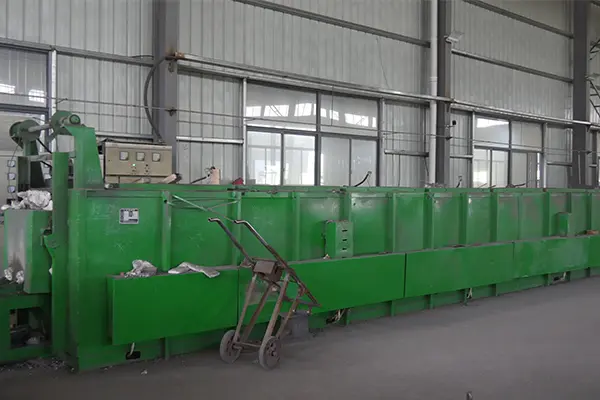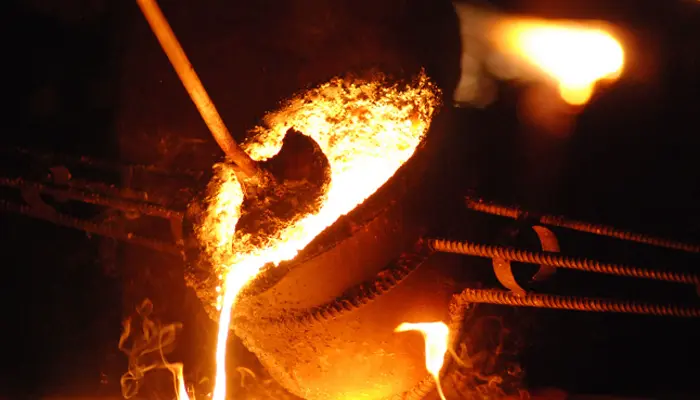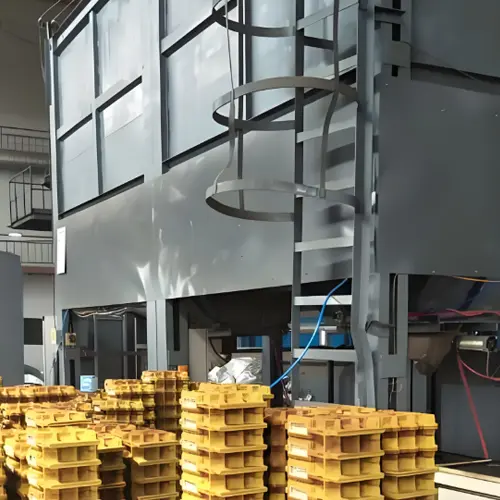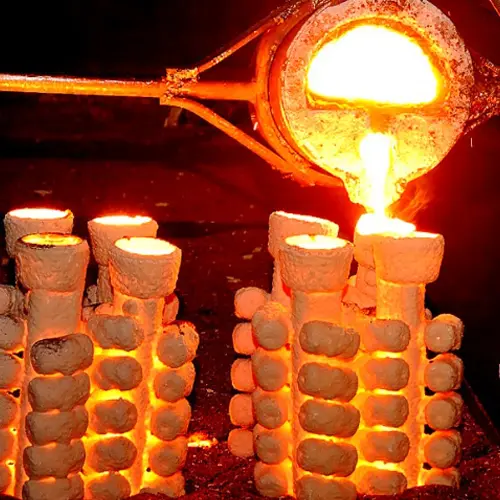The casting heat treatment process refers to a process that changes the internal structure of the casting through heating, insulation and cooling to achieve the purpose of improving material properties, eliminating internal stress, and improving performance. Casting quenching heat treatment process is an important heat treatment technology designed to improve the hardness, strength, wear resistance and other mechanical properties of castings to meet specific usage requirements.
1.Quenching purpose
The main purpose of quenching is to transform the austenite in the casting into a hard phase structure such as martensite or bainite through rapid cooling, thereby significantly improving the hardness and strength of the casting. At the same time, quenching can also improve the structural structure of the casting and improve its comprehensive mechanical properties.
2.Quenching process
2.1 Heating: Heating the casting to the austenitizing temperature, that is, a certain temperature range above AC3 (hypoeutectoid steel) or AC1 (eutectoid and hypereutectoid steel). The choice of heating temperature depends on the chemical composition and performance requirements of the casting. During the heating process, ensure that the casting is heated evenly to avoid overheating or overburning.
2.2 Heat preservation: Keep it at the heating temperature for a period of time to fully austenitize the internal structure of the casting. The length of holding time depends on the size, shape and heating temperature of the casting.
2.3 Cooling: Cool the casting to room temperature at an appropriate cooling rate. The speed of cooling has an important impact on the quenching effect. Too fast or too slow cooling rate may cause defects such as cracks and deformation in castings. Therefore, it is necessary to select the appropriate quenching medium and cooling method according to the material and performance requirements of the casting.
3.Quenching medium
Depending on the occasion, a variety of quenching media are used for quenching treatment. The selection of quenching media is crucial to the quenching effect. Commonly used quenching media include water, salt water, alkaline water, oil and specially prepared quenching agents. Different quenching media have different cooling capabilities and are suitable for different types of castings and quenching processes.
3.1 Water: has strong cooling ability, but can easily cause cracks and deformation of castings. Therefore, when using water as the quenching medium, the cooling rate and temperature need to be strictly controlled.
3.2 Salt water and alkaline water: improve the cooling capacity of high temperature areas by destroying the steam film. Suitable for quenching carbon steel and low alloy structural steel workpieces.
3.3 Oil: The cooling capacity is weaker than that of water, but it is not easy to cause cracks and deformation of castings. Suitable for castings with complex shapes or large sizes.
3.4 Specially formulated quenching agents: such as polyvinyl alcohol aqueous solution, trinitrate aqueous solution, etc., have specific cooling characteristics and are suitable for specific types of castings and quenching processes.
4.Quenching method
According to different cooling methods, quenching methods can be divided into single liquid quenching, double liquid quenching, graded quenching and isothermal quenching.
4.1 Single liquid quenching: Immerse the casting in a certain quenching medium and cool it to room temperature. The operation is simple, but the cooling speed is limited by the cooling characteristics of the medium.
4.2 Double-liquid quenching: First immerse the casting in a medium with strong cooling capacity to quickly cool, then take it out and immediately immerse it in another medium with weak cooling capacity to cool slowly. It can reduce the tendency of deformation and cracking, but the operation is complicated.
4.3 Graded quenching: Immerse the casting in a liquid medium with a temperature slightly higher or lower than the martensite point for a period of time, and then take it out for air cooling. It can effectively reduce phase transformation stress and thermal stress, and reduce the risk of quenching deformation and cracking.
4.4 Isothermal quenching: Immerse the casting in a medium of a certain temperature and keep it for a period of time to make the internal and external temperatures of the casting consistent and then take it out for air cooling. Suitable for castings with strict requirements on quenching deformation.
5. Precautions
5.1 Before quenching, the casting needs to undergo necessary pretreatment, such as annealing or normalizing, to eliminate casting stress, refine the grains, and improve the structure.
5.2 During the quenching process, parameters such as heating temperature, holding time, and cooling rate must be strictly controlled to ensure the quenching effect.
5.3 Tempering treatment should be carried out in time after quenching to eliminate quenching stress, stabilize the structure and improve the comprehensive mechanical properties of the casting.
To sum up, the casting quenching heat treatment process is a complex and important technology. By rationally selecting quenching media, quenching methods and controlling quenching parameters, the mechanical properties and service life of castings can be significantly improved.





